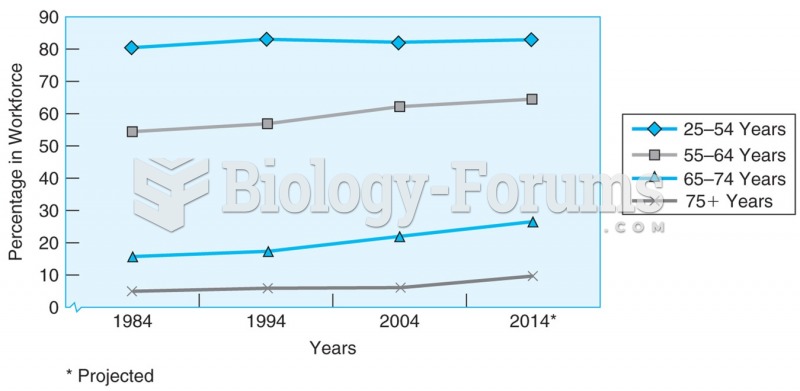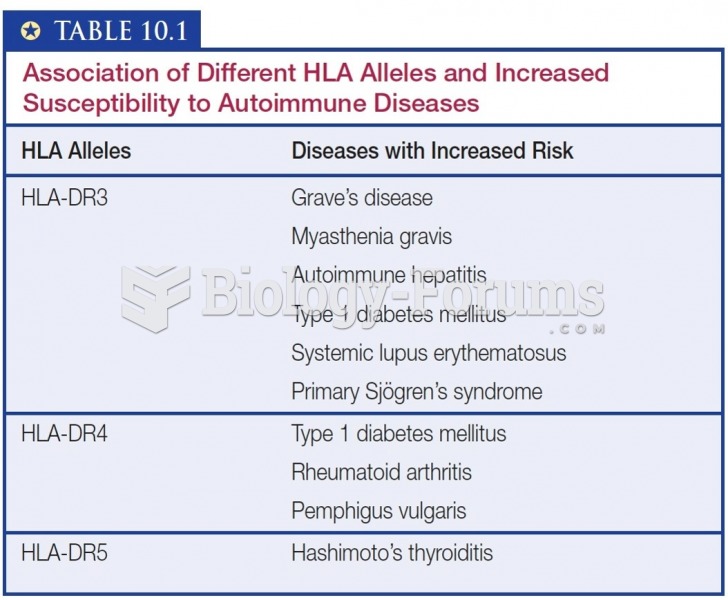|
|
|
Did you know?
The longest a person has survived after a heart transplant is 24 years.
Did you know?
The first monoclonal antibodies were made exclusively from mouse cells. Some are now fully human, which means they are likely to be safer and may be more effective than older monoclonal antibodies.
Did you know?
A good example of polar molecules can be understood when trying to make a cake. If water and oil are required, they will not mix together. If you put them into a measuring cup, the oil will rise to the top while the water remains on the bottom.
Did you know?
Medication errors are three times higher among children and infants than with adults.
Did you know?
Asthma is the most common chronic childhood disease in the world. Most children who develop asthma have symptoms before they are 5 years old.
 The proportion of U.S. adults in the workforce has increased slightly for older age groups over the ...
The proportion of U.S. adults in the workforce has increased slightly for older age groups over the ...
 A gasoline direct-injection system injects fuel under high pressure directly into the combustion ...
A gasoline direct-injection system injects fuel under high pressure directly into the combustion ...





